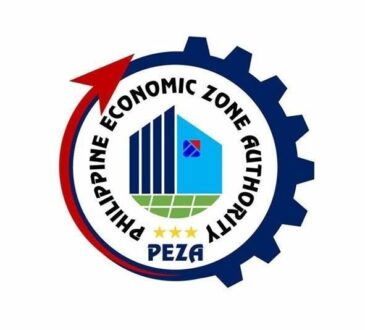
Latin America’s wealthiest investors are taking their fortunes to Miami at one of the fastest clips in history, with some fleeing regional turmoil and others lured by yields higher than they can find at home.
For JPMorgan Chase & Co. and Brazil’s biggest banks, the exodus has generated asset and client growth. For Morgan Stanley, not so much.
Wealth under management in Miami from Mexico clients alone increased by roughly 10% this year at JPMorgan, with similar gains coming from Argentina, Chile, Peru and several other Latin American nations, according to the firm.
“It’s incredible how much we’ve grown here in Miami,” Marice Brown, head of Mexico private banking at the New York-based company, said in an interview. “It was really hard to bring people to Miami in terms of talent, and now after the pandemic it’s the other way around,” she said, adding that this year the bank recruited enough new people to boost its workforce dedicated to Mexicans by 10%, to about 120 employees.
JPMorgan oversees about $180 billion from the region, managed from booking centers in Miami, Houston, New York and Geneva. As investors shift their fortunes, the Wall Street firm plans to expand its Latin American private-banking business into another floor in a Miami building at 1450 Brickell Ave.
Brazil’s biggest banks are sharing in the boom. Banco Bradesco SA increased its headcount in the Miami area to 230 from 190 after acquiring a bank in Coral Gables in 2019. Its total wealth under custody in Florida has doubled to $4 billion since 2019.
And Sao Paulo-based Itau Unibanco Holding SA saw its wealth under management climb about 10% in the city this year, to roughly $24 billion. The bank opened more than 1,000 accounts there in 2023. It also hired Fernando Marques from Banque Pictet & Cie SA in Zurich and moved him to Miami this month to become commercial head for private banking in the city.
Morgan Stanley has been the exception. The Wall Street giant has been losing clients and bankers in Miami amid a Federal Reserve review of the firm’s measures to prevent potential money laundering by wealth clients from outside the US, according to people familiar with the matter. The firm closed some accounts and stopped opening new ones from Latin American clients, the people said, asking not to be identified discussing private information.
Morgan Stanley is also changing its policy regarding those clients. Starting in the second half of 2024, the required account minimum for clients from Panama and Bolivia will increase to $10 million from $2 million, according to a person familiar with the matter. The minimum for costumers in markets including Brazil, Chile and Mexico will fall by half to $1 million, but the bank will no longer open new accounts for people in Venezuela and Nicaragua, the person said.
A Morgan Stanley spokesperson confirmed the changes to the account minimums, saying the bank remains “committed” to its international wealth business, but has developed targeted client models “that reflect appropriate risk considerations.”
With interest rates still high in the US, and with prospects the Fed may soon start to cut them, many investors are seeking dollar-denominated corporate bonds or Treasuries, Brown at JPMorgan said. Private credit is also attracting attention.
JPMorgan’s team in Miami dedicated to clients from Argentina, Chile, Paraguay, Uruguay, Peru, Ecuador and Bolivia has expanded about 10% this year, to 70 people, according to Ezequiel Lazcano, head of Latin America south at JPMorgan’s private bank. JPMorgan focuses on Latin American clients with about $10 million or more to invest with the firm.
“We saw a significant geographic portfolio reallocation to Miami related to the fact that our clients have found more compelling opportunities to multiply their wealth in the US than in some of their countries,” Lazcano said.
Another impetus for the Miami push has been a shift to leftist governments in Chile, Peru and Colombia, which sparked a capital flight from those nations as investors searched for safe havens, according to Carlos Gribel, head of Andbank’s brokerage firm in Miami. Andbank has been attracting $150 million of inflows a year to its $1.4 billion wealth under management in Miami, mostly from from those nations.
“The movement from Brazilians is slower, because of high local interest rates and stable political conditions, but when compared to historical outflows we see that they are also increasing their share of offshore investments in their portfolios,” Gribel said.
For other banks, demand from Brazilians has been extraordinary.
“This has been one of the more active years ever in our history in terms of clients doing exchange-rate conversions to invest abroad,” said Fernando Beyruti, global head of Itau’s private-banking unit, the biggest in Brazil’s onshore markets.
Percy Moreira, head of international private banking at Itau, said the bank is “seeing absurd demand from our clients for global investment diversification, mainly now that interest rates outside Brazil have increased a bit.”
With a mortgage portfolio of $2.3 billion, Bradesco is the lead bank in Florida in the business of financing real estate properties for non-resident individuals in the US, said Henrique Lima, chief executive officer at Bradesco Bank.
“We will keep growing this business, which has good profitability and delinquency rates close to zero,” Lima said. “The Miami market is still hot, and local crises in Latin America help to increase this type of lending, since many people like to take their money out of their nation and invest in something as solid as bricks in the US.”
Residential properties in the Brickell neighborhood of Miami. (Eva Marie Uzcategui/Bloomberg)
Copyright 2023 Bloomberg.




